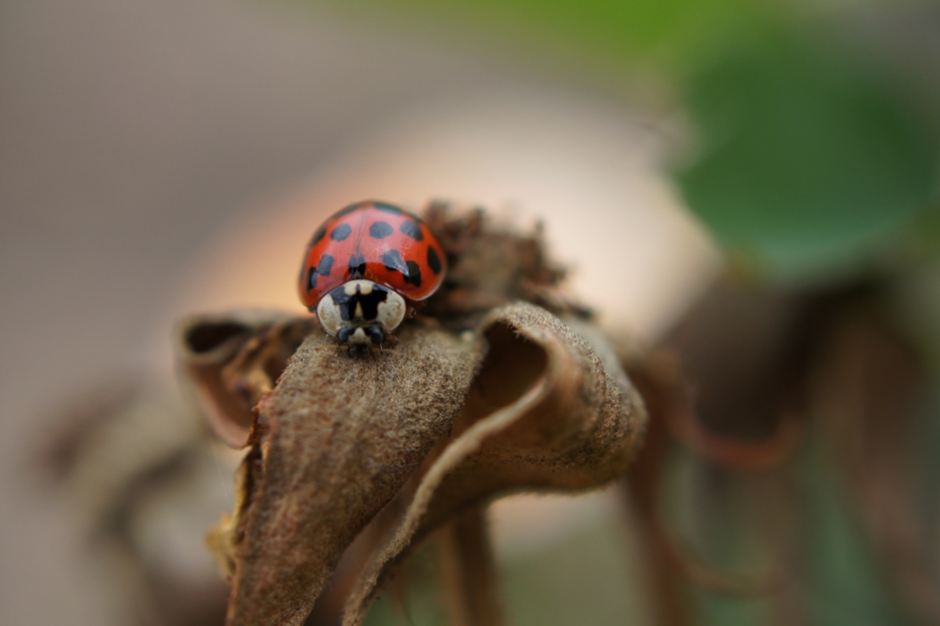A popular article about invasive ladybirds by C·I·B PhD student, Ingrid Minnaar, recently awarded her the first prize at SAASTA’s 2016/2017 Young Science Communicator’s Competition (YSCC). The Young Science Communicator’s Competition (YSCC) is a competition that challenges young scientists and researchers between the ages of 18 and 35 to communicate their research to a larger audience beyond their scientific community. With her article titled, “The harlequin ladybird: The bad side of a cute beetle”, Ingrid won the first prize for the category “Article category: writing a popular article for a newspaper or magazine.”
The organisers of the event, South African Agency for Science and Technology Advancement (SAASTA) asked Ingrid a few questions after receiving the award.
What motivated you to enter the competition?
“I have always wanted to engage with the public about my research, and the Young Science Communicators Competition seemed like the ideal platform with which to do this” explains Ingrid.
How do you feel about your success in this competition?
“I am absolutely over-the-moon! It is a great honour to have been chosen as the winner. My hope is that this article encourages many people to become more aware of their natural surroundings and to part-take in citizen science initiatives.”
Below is an excerpt from Ingrid’s article. Click here to read Ingrid’s full article on the SAASTA’s website: The harlequin ladybird: The bad side of a cute beetle
There are many hundreds of ladybirds in South Africa (some only a millimetre in size), but the ladybird you are most likely to come across in your garden is the harlequin ladybird, Harmonia axyridis, a globally invasive beetle native to Asia.
This ladybird was introduced to multiple locations across the world either intentionally as a biocontrol agent against pest aphids, or unintentionally by way of imported goods. This globetrotter has now spread into natural habitats on all continents except Australia and Antarctica with, as yet, no effective methods to curtail its colonisation. We do not yet know the exact pathway of introduction of this beetle into South Africa (although it was most likely from unintentional introductions), museum records show that it was present in the Cape Town area in 2001. It has since rapidly spread across the country and is currently occurring in all nine provinces.
Whereas the damage a single harlequin ladybird can cause is quite substantial, they can wreak havoc when they form large groups. By cannibalising native ladybird eggs, larvae and pupae, the harlequin ladybird has become the leading cause of native ladybird decline in the UK. In North America and the UK, it damages soft fruit in orchards, and causes the loss of millions of dollars of wine in the US by releasing a bitter substance when agitated during harvest, tainting the wine in the process. During winter they form large aggregations, secreting the same bitter substance which stains buildings, furniture and clothes yellow. They have also been known to bite people and cause allergic reactions such as asthma.
For more information about her research, contact Ingrid Minnaar at iaminnaar@sun.ac.za

How can you help?
A citizen science initiative with the aim to educate the public about this species, gather distribution records and collect specimens across the country has been started by the CL.I.M.E lab at the Centre for Invasion Biology at Stellenbosch University (http://invasives.org.za/component/k2/item/1239-harlequin-ladybird-citizen-science-project-launched). These data will be used to determine pathways of introduction, dispersal rates between geographic regions, and test hypotheses of invasion history using molecular techniques, thereby greatly informing management policies. You can also upload your photos of this species, along with the date and location of your snapshot, to iSpot.
For more information regarding the citizen science initiative, contact Minette Karsten at minettek@sun.ac.za


